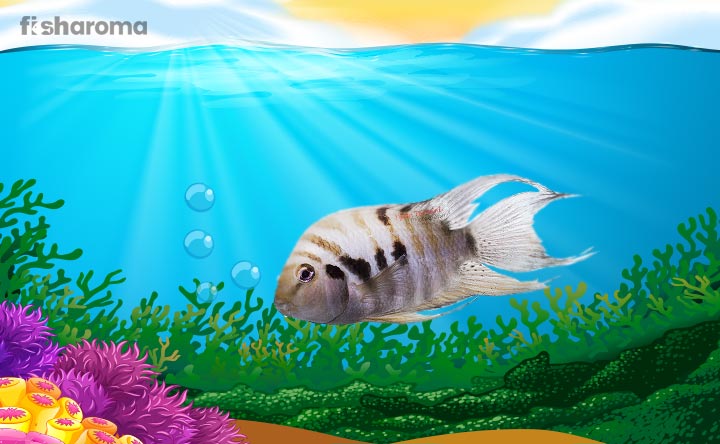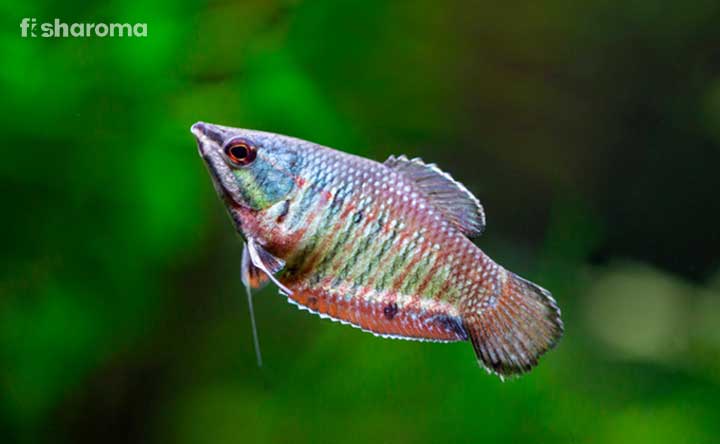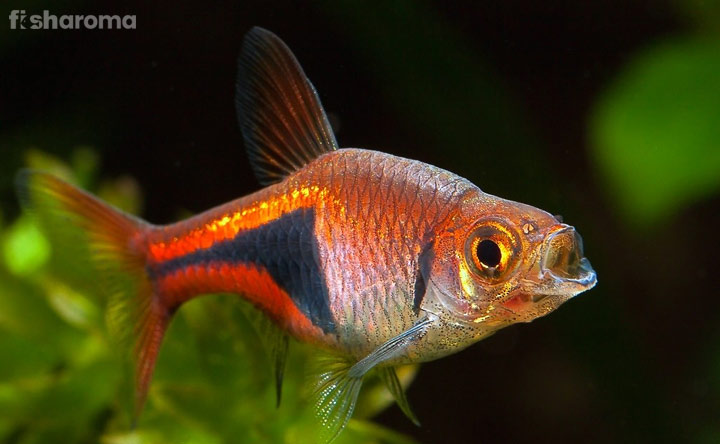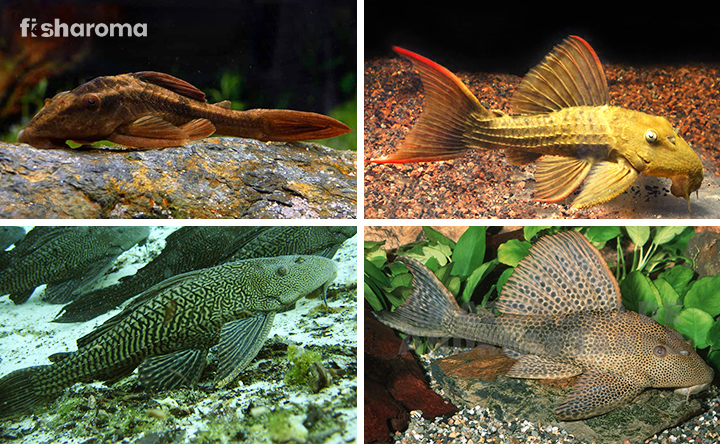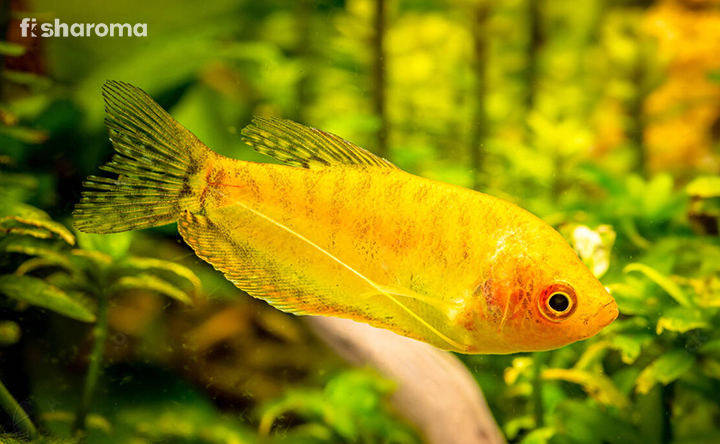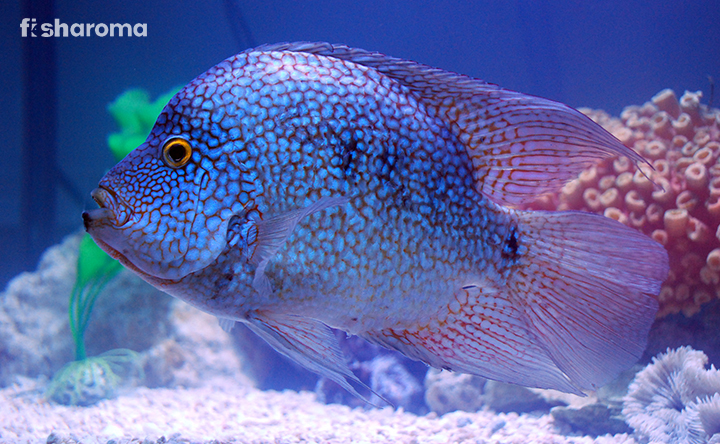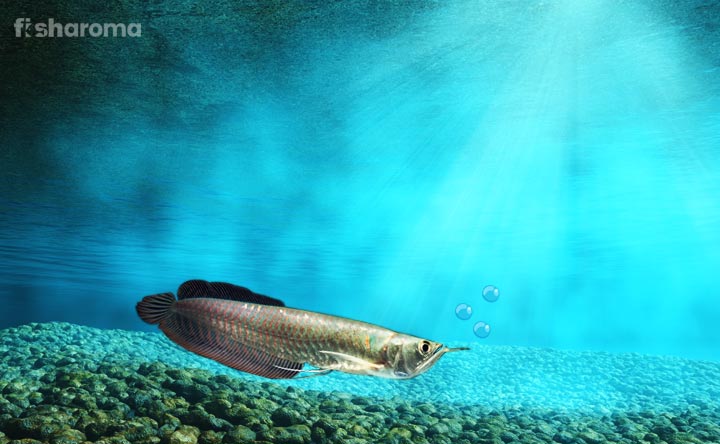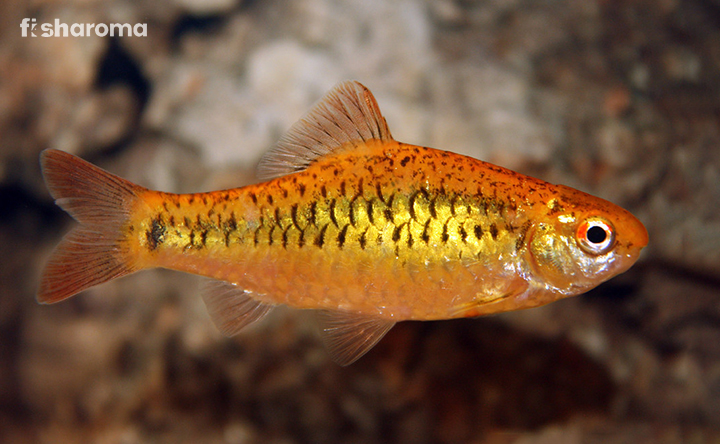Bala Shark – The Complete Care Guide of This Sparkling Beauty
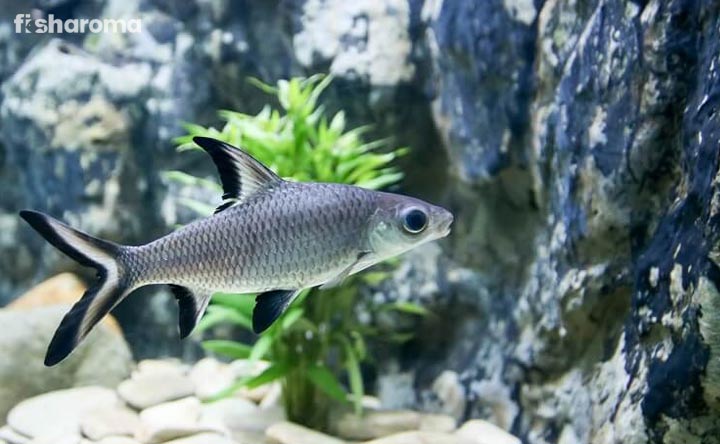
What about keeping a shark in your freshwater aquarium? Before you get a spine-chilling feel, you should know that it is a shark (precisely a mini-shark) by name only. Bala Shark or Silver Shark is not at all related to those ocean-dwelling Sharks you see in movies. Rather, it got the name just because of the similar structure and appearance. Impressive indeed!
But what about caring for the Shark? If you consider that it is going to be extremely difficult, it’s high time to come out of misconception. It is a large yet very friendly and peaceful fish that can transform your boring freshwater aquarium into a pleasing centerpiece.
Key Specifications of Bala Shark
| Scientific Name | Balantiocheilos melanopterus |
| Family | Cyprinidae |
| Origin | South-east Asian Countries |
| Size | Maximum 12” (30.48 cm) |
| Color | Black and grey with yellow gradients |
| Care Level | Intermediate |
| Lifespan | 10 years |
| Temperament | Peaceful but semi-aggressive to small fish |
| Compatibility | Medium (with peaceful and small fish) |
| Tank Size | 150-gallons |
| Diet | Omnivore |
Overview
This fish is also known as Hangus, Tricolor Shark, Silver Bala, Silver Shark, Bala Shark Minnow, Malaysian Shark, and Tri-Color Minnows. Its colors give a metallic look that attracts the fish keepers at once. In 1850, Pieter Bleeker first found this species. At present, the number of this one is decreasing fast due to the massive change in their habitat.
Origin and Habitat of Bala Shark
This fish is originally from South-East Asia; to be more specific, it is available in Thailand, Indonesia, Malaysia, Cambodia, Kalimantan, Borneo, and Sumatra in large numbers. In Chao Phraya basin and Mekong Basin in Thailand, it used to be available in huge quantities. They are found in the lakes and medium to large rivers of these areas.
Right now, in most of its natural habitats, it has become extinct. However, trade for the aquarium is not mentioned as a reason behind this, but pollution and deforestation are two definite reasons behind this. This fish is an inhabitant of clean water, and it is simply unable to cope up with an increasing level of water and air pollution. Fish farms are now trying to breed this fish in their natural habitat to meet the demand of aquarists.
Appearance of Bala Shark
It looks like the sharks because of the torpedo-shaped body and slanting, triangular-shaped dorsal fin. It is a beautiful looking fish whose scales have a different sickle-like shape. The fluke of this fish is seen to be bifurcated. Overall, it has a slender structure. Females are larger than males, and they don’t have the slender structure like males, rather they are round.
Their eyes are larger in comparison to their small heads. These big eyes help them to see the prey clearly and have a better focus at the time of hunting. It has a flattened body from both sides and its body is covered with very large silver scales.
Size of Bala Shark
At the juvenile stage, this fish is 2” (5.08 cm), but adult ones are 10-12” (25.4-30.48 cm). Precisely, in their natural habitat, they are generally 13-14” (33.02-35.56 cm). But in captivity, they can be found 10-12” (25.4-30.48 cm).
Color of Bala Shark
Different shades of black, grey, and golden can be seen on their bodies. All their fins (dorsal, pelvic caudal, and anal) have different shades of golden yellow, followed by a black edge. Ventral fins are sometimes found to be mono-colored as well. Among the adults, this golden-yellow stretch is seen to turn into white.
Silver-steel scales of this fish have truly made it a sparkling fish. Towards the fins, the scales are light golden. The density of the scales of this fish makes its appearance even shinier. In some parts of its body, silver with tinges of teal can also be noticed among the juvenile ones. It looks splendid in ample lighting conditions.
Behavior of Bala Shark
It is generally a peaceful fish, and they stay in the mid-level of the aquarium. Being the fish of mid-level, they do not tend to dig a hole in the substrate like the bottom dwellers. On the other side, they prefer to swim, and they need more and more space to swim. They only go towards the bottom to fetch the food in case the food particles sink before eating and at that time, they make sounds.
They are definitely unlike the ocean Sharks, and they do not mess with the aquarium decors or plants.
This fish is usually active, but sometimes they like to take rest in the caves and logs, and during their resting time, if you tap on the aquarium from outside, they get startled very easily. Also, they take some time to cope up with the environment of the aquarium.
Lifespan of Bala Shark
In a properly maintained aquarium, Bala Sharks can live up to ten years. However, their lifespan in the wild is longer than this.
Diet of Bala Shark
This fish is omnivorous, and an aquarist will get several food options for them. It is seen to be stressed due to the same type of foods; therefore, variations are needed.
When it comes to diet, it is a very greedy kind of fish, and right after eating, it starts looking for food at the bottom of the tank. In spite of being greedy, they will refuse the food because of the lack of variations and live on algae.
As they are core omnivores, they can eat the plant substance as well as the meat in their natural habitat. When it is in the aquarium, you have to combine the plant materials with the non-veg items in a balanced proportion so that the fish can get all the nutrients from the food. A list of food options is given below to assist you:
- Dry Seaweed
- Spinach
- Shelled peas
- Lettuce
- Small pieces of fruits
- Freeze-dried vegetables
- Tubifex
- Tropical flakes and Algae Wafers
- Crustaceans
- Brine shrimps
- Insect Larvae
- Daphnia
- Small insects
- Chopped Earthworms
- Mussels
- Mosquitoes
- Prawns
Ensure that your pet fish is consuming the food in five minutes. Determine the quantity of food according to that. It is also recommended to feed the fish twice or thrice. Make sure you do not overfeed the fish. When you are feeding the fish twice or thrice, make sure your fish is consuming that food within a couple of minutes.
Keep it in mind that this fish grows quite large. Therefore, the protein is a must in their diet. If you are feeding it twice or thrice a day, one meal among them has to be composed of fleshy food items. In case, you feel that you have overfed the fish, you are free to feed it in less quantity in its next feeding.
Along with the store-bought foods, live and frozen foods are required to keep them active and playful. The quantity of herbivorous flakes and pellets should be lesser than non-veg foods as they will eat algae often.
Skip Bloodworms which are preferred by most of the freshwater species, as Bala Shark may have some digestion problems for eating this.
Tank Requirements of Bala Shark
Indeed, food is the secret of a healthy fish, but Bala Shark has typical tank requirements. It will fall sick, and they will be stressed due to improper tank conditions. You need to be very careful while making these adjustments. Know about the ideal tank for this fish:
Tank Size
In the pet shops, you will get the juvenile ones, which are just ¼ in size, which can mislead you that your small tank will do well for them. But an adult one is very large which means that a spacious tank will be required. In addition to that, this fish is among the shoaling fish which prefer the individuals from own community. It is generally advised to keep four Bala Sharks in a tank for which you will need a minimum 150-gallon tank.
You can keep 2-3 pairs of juvenile fish in a 70-80-gallon tank, but as soon as it becomes mature, you have no other options except upgrading into a bigger tank. In case you want to keep a pair or a single one in a community tank, the size should be minimum 150-gallon because it has to be kept with other large fish.
They are very fast swimmers, and as soon they will see that there is a shortage of space in the aquarium, they will be stressed. For a single adult Bala Shark, a minimum 45-gallon tank will be required.
Tank Lid
This fish is among the jumpers, so you cannot keep the tank uncovered. It stays peaceful most of the time, but it gets startled easily and jumps right then. A tight lid is required to keep the fish secured because they can jump out of the aquarium and die.
Substrate
As this fish is too shiny, it will be better to get a substrate of dark pebbles. It is not a bottom dweller or hole-digger, so, it is unnecessary to use sand. Also, it enjoys swimming most of the time, so hiding places like caves will not be required much. 1 cm thick substrate will be good for them.
Aquatic Plants
The use of aquatic plants is completely optional, but if you want, you can use the floating plants with thick leaves and strong roots. There is a possibility that the fish will unintentionally damage the plants at the time of swimming. Water Wisteria can be a good choice here. Duckweed, Anubias, Hornwort, Dwarf Water Lettuce and Cabomba can be used in this matter.
Filter
A filter is mandatory as this fish is intolerant with polluted water. In its natural habitat, they are used to the fast-flowing water, which you can replicate with the filter. A tank with Bala Shark should be clean and oxygenated. With the help of a canister filter, you can keep the tank clean and produce low to medium current. Alternatively, you can use the powerheads for current.
Lighting
It prefers natural lighting, and if that is not possible, you can use any mild lighting. Simple aquarium lamps for eight hours will be sufficient for them.
Décor
Driftwood will be a good décor here, along with small rocks. Actually, this fish is more concerned about the space of swimming it gets in the aquarium, and it is least bothered about the decors. If they get space to swim, it will not displace the decors, or they will not hide. Initially, they are stressed, and at this time they tend to hide in the logs. So, small logs and caves will be alright for the first few months. Avoid any décor with sharp edges or light color as it will make the fish pale.
Water Type for Bala Shark
For Bala Shark, water parameters need to be strictly maintained, and it sometimes becomes difficult for the aquarists. Know these in detail:
Temperature
The temperature has to be between 72-82°F (22.2-27.8°C), but 77°F (24°C) is considered as the ideal water temperature for them.
pH Level
The range of pH levels of such tanks will be between 6.5 and 7.8. Higher or lower from this range will make the fish unhealthy, and they will become prone to various diseases.
Hardness
Maintain the water hardness within 10-13 dGH, even though Bala Sharks are not very sensitive to water hardness.
Nitrate Level
Just like any other aquarium fish, nitrate is extremely harmful to Bala Sharks. Nitrate level should be the least possible, and to do so, food wastes, and fish excretes need to be removed regularly.
Cleaning Methods
Use a vacuum siphon to clean the tank. It is necessary because Bala Sharks feed on the sinking foods, which may be stuck to the aquarium base. Manual cleaning can also be done to make sure you do not use any chemicals or soap to clean the dirt from the substrates.
Replacement Procedure
The natural habitat of Bala Sharks is the origin of the rivers and the bends where water is clearer than the rest of the river basin. Therefore, cleaning the aquarium regularly is mandatory. It will be good to change one-third of water each week.
Compatibility of Bala Shark
This fish is likely to stay within its own community due to its shoaling tendency. You can add 5-6 Bala Sharks in your tank, but make sure your tank is not overcrowded. In a small tank, you can keep a pair as well, but keeping it alone is not a good idea. You can notice their initial stress and aggression are getting reduced if you keep a small group of four. Also, they will soon get used to the aquarium and engage in playful activities if they are kept in the group.
Suitable Tank Mates of Bala Shark
It is a peaceful fish, and you will see them staying in harmony with various large fish. Also, their aggression will be suppressed with these fish. It is recommended to keep the same sized fish and slightly larger ones with this fish. You can keep them with peaceful to semi-aggressive fish too. Following are the suitable tank mates for this fish:
- Rainbowfish
- Any large Gourami
- Char
- Tetra
- Corydoras
- Cyprinid
Before adding Bala Sharks to a community tank, put four or more Bala Sharks together because they are stressed for many days initially. Keeping them together will help them to settle in smoothly. They get easily scared, and adding them in the community tank right at the beginning will startle them, which will result in their attempts to jump out of the aquarium.
Unsuitable Tank Mates of Bala Shark
In case you want to raise this fish in a community tank, beware of keeping them with small fish, which is generally a part of their diet in the natural habitat. Extremely large and carnivorous fish are also restricted as they will eat the Bala Sharks. The unsuitable tankmates of Bala Sharks are as follows:
- Harlequin Rasbora
- Neon Tetra
- Any types of large Cichlids
- Jack Dempsey
- Guppy
- Crayfish
- Shrimp
- Snail
Breeding of Bala Shark
Captive breeding of this fish is not successful because of their large size. Also, their ideal breeding requirements are still unknown. They are egg-scatterers, which makes home aquaria breeding impossible. However, breeding in fish farms in Thailand and some other Asian countries have some successful reports. For this reason, commercial breeders often use hormones to spawn in order to meet the demand of the aquarists.
Common Diseases of Bala Shark
It is an extremely sensitive fish that generally does not catch diseases if aquarists follow strict guidelines and parameters for this fish. Due to negligence in water change or faulty filters or temperature or feeding issues, this fish can have Dropsy and Ich.
1. Dropsy
It is a bacterial infection which makes the fish fat. In most of the cases, excessive fluid is seen in the fish. Some antibiotics can control this disease. Since the size of this fish is quite big, get experts’ advice to know about the dosage.
2. Ich
This disease affects the scales most, and the fish rubs its body against the gravels to heal itself. Along with that, small white spots can be seen in its body. It is a parasite that goes into the body of fish from foods. You can adjust temperature and apply aquarium salt to heal the fish. If these two do not work, you can apply the copper or potassium-based solutions in the water to control the growth of the parasite.
Summary
Bala Shark is for experienced fish keepers, and you cannot neglect its requirements. It is an extremely sensitive fish that cannot tolerate a slight mismatch in the tank and water requirements. You have to keep this fixed in your mind before petting this fish.
Well, difficulties are a part of fish keeping. But are you willing not to pet such a magnificent fish just because of these difficulties? Of course not! You have to put some efforts for this fish, and in return, it will fill you with the joy of keeping a shiny look-alike of shark in the aquarium. Now, that sounds really cool, right?
Interesting facts about Bala Shark
- In the natural habitats, Bala Sharks do not look after their young ones. The fries are self-dependent from the beginning, and they find a group and grow up with them.
- The main reason behind the extinction of this fish is the adults eating almost all their eggs. So, it becomes difficult to collect their eggs from the wild. Presently, fish farms are playing a major role in breeding them.
Some Other Mini-Sharks for Freshwater Aquarium
If you find Bala-Shark interesting, the following species will definitely interest you:
- Iridescent Shark – Pet a shark that is always active and never sleeps! Also, it is a peaceful Shark that needs the least aquarium adjustments.
- Red Tail Shark – Get the feeling of ocean-dwelling Sharks with this semi-aggressive species. Know how to handle them.
- Rainbow Shark – Know about the multi-colored mini-Shark, which becomes aggressive at different times to attack their enemies.

